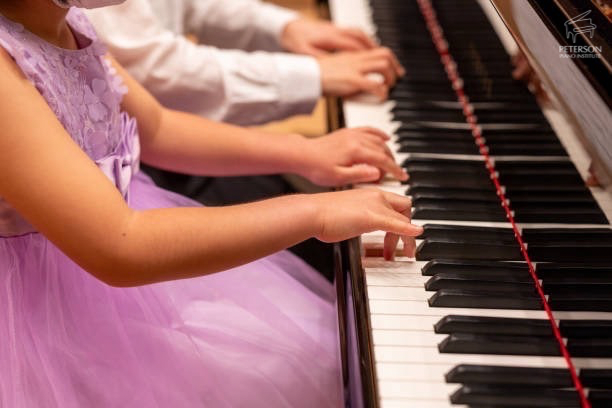
What is a Duet?
By: Peterson Piano InstituteDuet playing refers to a musical performance involving two musicians. This can take the form of:
• Two pianists playing on the same piano (piano four-hands)
• Two pianists on two separate pianos
• Or two different instruments, such as piano and violin, flute, trumpet, etc.
Benefits of Playing Duets
1. Improves Listening Skills
• Players must listen closely to each other’s rhythm, melody, and balance to achieve harmonious performance.
2. Enhances Rhythmic Precision
• Playing together requires maintaining a consistent tempo, helping both players develop stronger rhythmic control.
3. Builds Ensemble Experience
• Encourages understanding of musical collaboration, role-sharing, joint interpretation, and creative balance adjustment.
4. Strengthens Technique and Mastery
• Requires hand coordination and technical agility, enhancing skills like finger control and musical phrasing.
5. Increases Enjoyment and Motivation
• Playing with a partner is more enjoyable than practicing alone and motivates regular practice with a sense of accountability.
6. Boosts Confidence in Performance
• Performing alongside a partner helps reduce performance anxiety and allows for shared success on stage.
7. Expands Musical Styles and Repertoire
• Opens up opportunities to explore a wide variety of genres such as classical, folk, jazz, and more.
8. Develops Sight-Reading Abilities
• Reading music in real-time with another player trains you to keep going even when mistakes happen.
9. Improves Communication and Teamwork
• Requires discussion and agreement on tempo, dynamics, articulation, and synchronized starts.
10. Prepares for Chamber Music
• Duets serve as an essential foundation for entering the world of chamber music, which involves more complex group coordination.
From the Perspective of Teachers and Educators. Teachers often use duet playing as a teaching tool to help students improve balance and rhythmic accuracy, develop accompanying skills, such as pedaling and tempo control and encourage sensitivity to non-verbal cues and musical intonation, fostering deep listening skills.
💡 Quick Tips
• Start with simple pieces both players are comfortable with
• Practice synchronized starts using eye contact, breathing together, or assigning a tempo leader
• Arrange seating for smooth hand coordination
• Discuss and agree on dynamics and tempo before playing
BLOG
Music articles to help you understand the process of learning to play an instrument more!
VISIT OUR BLOGJoin PETERSON’S most distinguished music academy for everyone
Exclusive music instruction form the children at the age of four
REGISTER NOW